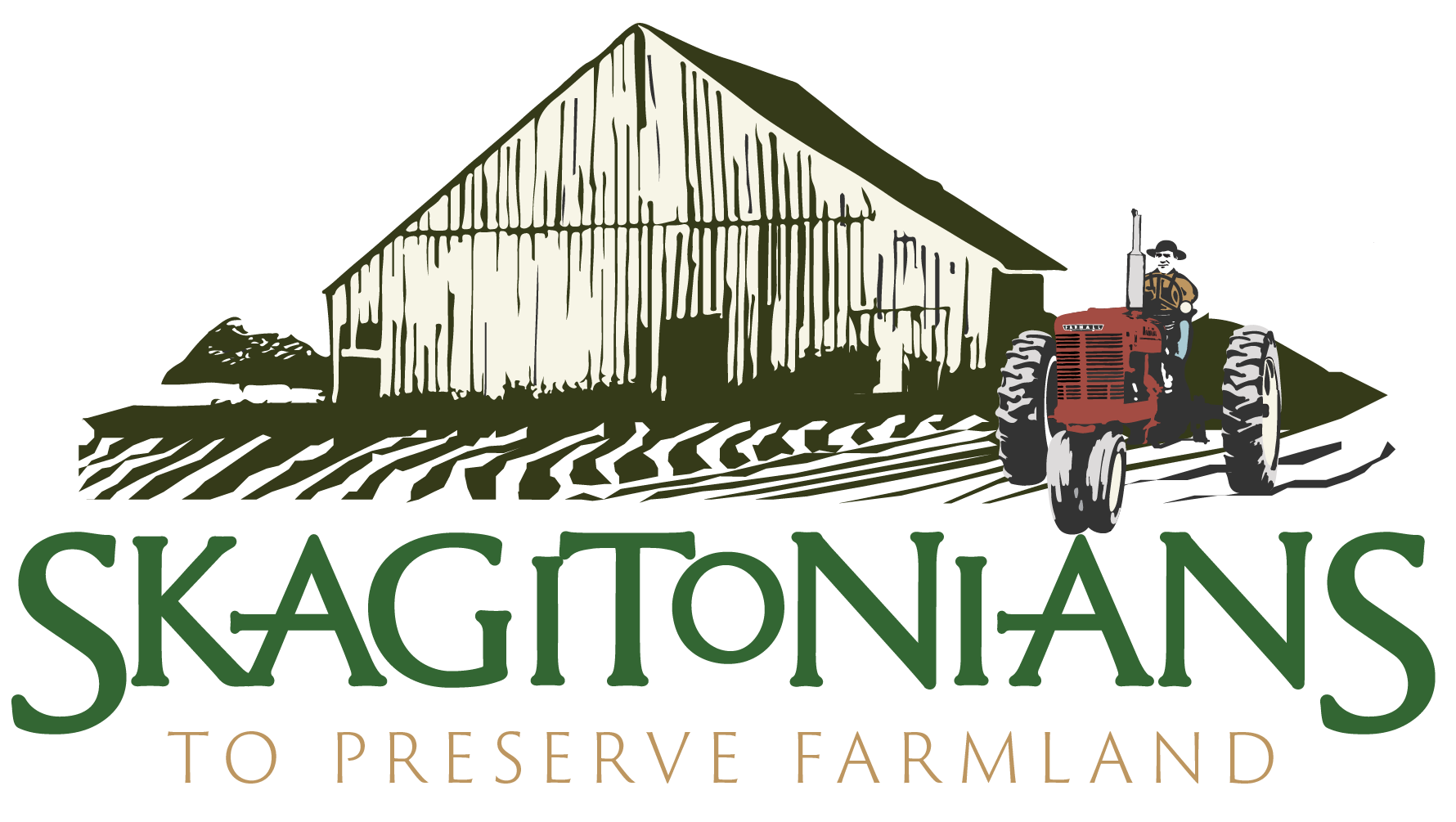The Role of Small Scale Farms in Skagit Agriculture
This is the second of a two-part series where we look at the role small-scale farms play in Skagit agriculture. Last month we explored the role of large-scale farms.
The Importance of Small-Scale Farms in Skagit Agriculture
To make a living as a small-scale farmer, according to Diane Szukovathy, you have to “think carefully about which hats you need to wear.” And you’ll wear lots of them: entomologist, hydrologist, chemist, mechanic, accountant, marketer, and so on. Szukovathy knows this from hard-won experience. She and her husband bought a seven-acre parcel in Mount Vernon in 2001. In the decades since, they transformed a one-time horse pasture into Jello Mold Farm, a thriving farm that mainly supplies the cut flower market. “Everything except tulips,” Szukovathy joked.
Small-scale farms like Szukovathy’s fill important niches in the broader Skagit agricultural system, distinct from large-scale operations. They work smaller parcels, offer distinct products, and provide opportunities for a diverse set of farmers. Small farms – think of parcels smaller than 15 acres or annual gross cash farm income below $350,000 (older sources use $250,000) that the US Department of Agriculture uses as a dividing line between small- and medium-sized farms – are vital for keeping Skagit agriculture thriving and creating a distinct community here.
Some Unique Niches of Small Farms
Small-scale farming generates unique outcomes in Skagit Valley.
Agriculture always contains risks, but small farms can pivot and evolve more quickly, which may increase their resilience in challenging times, such as during the COVID-19 pandemic. They may be nimbler in trying novel crops and tapping new or evolving markets, because they have smaller infrastructural constraints.
Although small farms produce far smaller yields in total than large operations, small farms are more productive on a per acre basis and contain greater biodiversity. These values often drive small farmers.
For instance, Jello Mold Farm touts its sustainability as part of its core principles. “I wanted to be a land steward,” said Szukovathy. The farm is designed deliberately with wildlife in mind. This sort of orientation is common across Skagit’s small farms with many small-scale organic operations dotting the landscape that make Skagit County the highest organic-producing county west of the Cascade Mountains.
In addition, small farms often occupy odd parcels of land that would be difficult, if not impossible, to farm at large scale. Fields might be too small for the necessary equipment for larger scales. By farming these small plots, small-scale operations keep land in open, agricultural space rather than converting it to other uses.
Symbiotic Relationships
Fortunately, all farmers in the Skagit benefit from each other’s presence. As discussed in last month’s story in The Dirt, businesses serve large and small alike and cheer on all farmers to success. The presence of big commercial operations ensures these support services remain available locally for small farmers, too. Similarly, resources like the Washington State University Northwestern Washington Research and Extension Center benefit all farmers regardless of the size of their operations.
Although the general public sees the large fields of large farms more easily, they are more likely to enjoy face-to-face encounters on small farms, many of which offer opportunities for firsthand experiences, like u-pick berries, corn mazes, or farm tours. At a time when Americans are increasingly distanced from their food system, these personal connections to agriculture build understanding and increase empathy for farmers.
In Szukovathy’s experience, the personal connections among Skagit farmers make the enterprise work more smoothly. Reciprocity and cooperation have become important values and characteristics among those making their livings on the land.
Diverse Small Farmers
Many conversations with Skagit farmers begin with them establishing their generational credibility, proudly identifying how many generations of the family have been growing food in Skagit County. Small-scale farms provide opportunities for new farmers to give it a go.
In contrast to the large-scale, multi-generational family farms, small farmers represent a more diverse group. It includes farmers just starting out – either younger or older – without the benefit of having grown up working on the family farm. It includes former farmworkers who have banked their hard work and expertise to become independent. A sizeable percentage of small farms are operated by women.
Getting started can be challenging. Viva Farms has been building unique opportunities with its programs since 2009. Its mission is to lower barriers to enter farming and does so with bilingual training and organic farming techniques. By making it easier to get started, Viva Farms has helped incubate dozens of new farms, including many that are Latino-owned and women-operated. This effort represents some of the key characteristics of new trends in small-scale agriculture.
For some, a small farm is the final goal; for others, it represents the first step to a larger farm.
Measuring economic output hardly suffices to gauge the value of small farms, because they are launch pads to dreams. They provide diversity of products and farmers, enhancing Skagit agriculture.
Not One Size Fits All
Agriculture is not a one-size-fits-all proposition. There is room for all kinds of farms – large and small and medium – in Skagit County. Like a natural system, the complex, intricate economy is stronger because of its many parts. Without all the pieces, the Skagit agricultural system would wither.
Instead, the community is full of people committed to raising quality products and maintaining an agricultural presence on the land. Just like the individual farmer, the agricultural community has to wear a lot of hats.
By Adam Sowards: info@skagitonians.org

